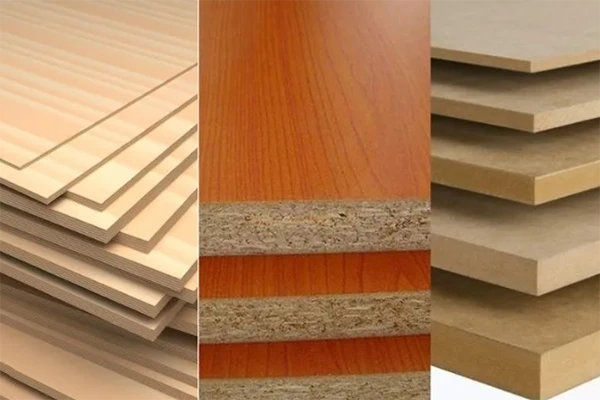Melamine faced MDF, also known as melamine chipboard or melamine board, is a type of engineered wood product that has gained significant popularity in the furniture and interior design industries. By combining the affordability and workability of medium-density fiberboard (MDF) with the durability and design flexibility of melamine, this material offers a range of benefits for a variety of applications. This blog post will explore what melamine faced MDF is, its advantages, and how it is being used in modern design.
What is Melamine Faced MDF?
Melamine faced MDF is created by applying a melamine resin-coated decorative paper to both sides of an MDF panel. The melamine resin not only provides a vibrant and hard-wearing surface but also offers increased resistance to heat, stains, and scratches, making it an ideal choice for high-traffic areas and heavy-use furniture.

Advantages of Melamine Faced MDF:
Durability: The melamine surface is highly resistant to wear and tear, making it suitable for use in kitchens, bathrooms, and offices.
Low Maintenance: Melamine faced MDF requires minimal upkeep and can be easily wiped clean, a feature that is particularly beneficial in family settings.
Cost-Effective: Compared to solid wood or other high-end materials, melamine faced MDF is more affordable, allowing for stylish designs without a hefty price tag.
Design Flexibility: The melamine surface can be printed with a variety of patterns and colors, offering designers a wide range of aesthetic options.
Easy to Work With: Like standard MDF, melamine faced MDF can be cut, shaped, and assembled with ease, making it a popular choice for DIY projects and professional furniture manufacturing.
Applications of Melamine Faced MDF:
Furniture: Used in the production of kitchen cabinets, office furniture, and children’s furniture due to its durability and cost-effectiveness.
Wall Panelling: Its resistance to moisture makes it a popular choice for wall panelling in bathrooms and other wet areas.
Flooring: Melamine faced MDF can be used as a core material in the production of laminate flooring.
Decorative Elements: Used for creating decorative panels, shelving, and other design elements that require a combination of style and durability.
Environmental Considerations:
While melamine faced MDF is a more sustainable option compared to solid wood due to its use of wood fibers and manufacturing efficiency, it is important to consider the sourcing of the MDF and the production processes. Opting for products with Forest Stewardship Council (FSC) certification ensures that the wood used is from sustainably managed forests.
The Future of Melamine Faced MDF:
As design trends continue to evolve, melamine faced MDF is likely to remain a popular choice for its blend of affordability, durability, and style. Future developments may include new patterns, textures, and even integrated smart technology features.
Conclusion:
Melamine faced MDF is a versatile and practical material that has found its place in various applications within the interior design and furniture manufacturing industries. Its combination of durability, design flexibility, and cost-effectiveness make it an attractive option for both designers and consumers looking to create stylish and functional spaces.
Post time: 05-15-2024











